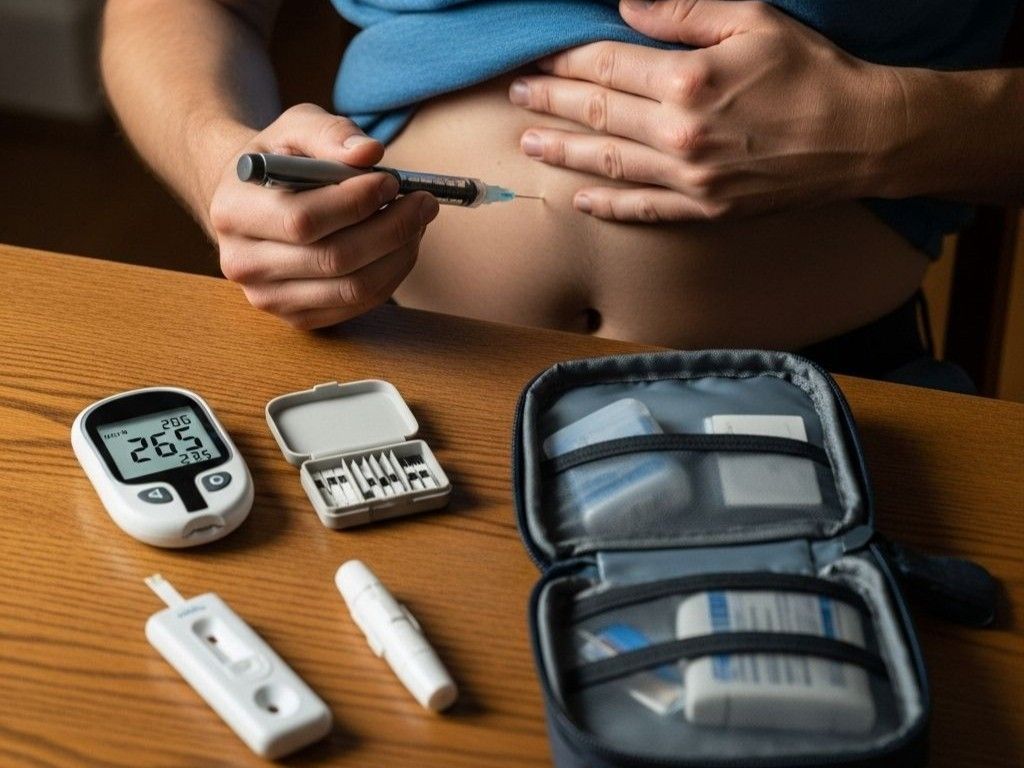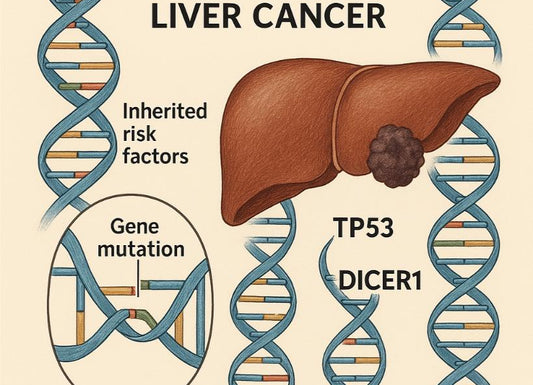Average Insulin Doses for Adults With Type 2 Diabetes
 Written By
Blen Shumiye, MD
Written By
Blen Shumiye, MD

Living with type 2 diabetes requires careful daily decisions about food, physical activity, and medication. For many adults, lifestyle changes and oral medications such as metformin are enough to maintain healthy blood sugar levels. However, when these approaches are insufficient, insulin therapy may become a necessary part of treatment. One of the most common questions patients and caregivers ask is: “What is the average dose of insulin for adults with type 2 diabetes?”
The answer is not straightforward. Insulin dosing is highly individualized, depending on factors such as body weight, diet, activity level, insulin sensitivity, and other health conditions. While guidelines provide starting points and averages, the exact dose varies widely from person to person.
This article provides a comprehensive overview of insulin dosing in adults with type 2 diabetes. We will explore why insulin may be necessary, how doses are calculated and adjusted, the different types of insulin, factors influencing dose requirements, and tips for safely optimizing insulin therapy.
Why Do People With Type 2 Diabetes Need Insulin?

Type 2 diabetes develops when the body either does not use insulin effectively (insulin resistance) or does not produce enough insulin. Initially, lifestyle modifications like healthy eating, weight management, and regular exercise combined with oral medications often suffice. However, if blood sugar remains high despite these measures, insulin therapy may be added to the treatment plan.
Your healthcare provider may recommend insulin in the following situations:
-
Persistent high A1C: Blood sugar control remains poor despite oral medications, typically with A1C above 9–10%.
-
Extremely elevated fasting blood sugar: Readings above 300 mg/dL.
-
Symptoms of uncontrolled diabetes: Excessive thirst, frequent urination, or unexplained weight loss.
-
Special circumstances: Hospitalization, surgery recovery, or pregnancy, where tight blood sugar control is critical.
Insulin helps the body regulate glucose by allowing it to enter cells for energy. Without adequate insulin, blood sugar levels rise, increasing the risk of complications like neuropathy, kidney damage, and cardiovascular disease.
How Insulin Dosing Is Calculated
Insulin acts like a key that unlocks cells, allowing glucose to enter and be used for energy. Too little insulin results in hyperglycemia (high blood sugar), while too much can cause hypoglycemia (dangerously low blood sugar).
Doctors consider multiple factors when determining insulin doses:
-
Body weight: Heavier individuals often require more insulin.
-
Insulin sensitivity: Some people respond to small doses, while others need larger amounts.
-
Diet and carbohydrate intake: Meals with more carbs generally require more insulin.
-
Physical activity: Exercise increases insulin sensitivity, often reducing dose requirements.
-
Other health conditions or medications: Corticosteroids, kidney disease, or liver disease can alter insulin needs.
Because these factors differ widely among patients, there is no universal dose. Physicians rely on starting guidelines and adjust doses based on blood sugar trends.
Starting Insulin Doses for Adults With Type 2 Diabetes
The American Diabetes Association (ADA) recommends two common approaches for initiating basal insulin therapy:
-
Fixed starting dose: 10 units once daily.
-
Weight-based starting dose: 0.1–0.2 units per kilogram of body weight per day.
Example calculations:
-
If you weigh 70 kg (154 lbs): 7–14 units daily.
-
If you weigh 90 kg (198 lbs): 9–18 units daily.
Starting low allows for safe titration. Your provider will gradually increase the dose until fasting blood sugar reaches the target range of 80–130 mg/dL.
Adjusting Insulin Doses Over Time
Insulin therapy is not static. Doses are adjusted based on blood sugar patterns to ensure safety and effectiveness. A typical adjustment process includes:
-
Start at 10 units or 0.1–0.2 units/kg.
-
Increase gradually by 2–4 units every 3–4 days.
-
Continue titration until fasting blood sugar is stable within the target range.
In practice, many adults with type 2 diabetes eventually need 30–60 units of basal insulin per day. Individuals with obesity or significant insulin resistance may require over 100 units daily.
Mealtime (Bolus) Insulin
If basal insulin alone does not achieve target blood sugars, mealtime insulin (also called bolus insulin) may be added. Bolus insulin is taken before meals to cover carbohydrate intake.
Typical starting doses:
-
4–6 units with the largest meal.
-
Weight-based: ~0.1 units/kg per meal.
A full basal-bolus regimen usually requires 0.4–1.0 units/kg per day, divided between long-acting (basal) and mealtime (bolus) insulin.
Read on When is the best time to take insulin for type 2 diabetes? and Blood Glucose 3 Hours After Eating: What Should It Be?
Types of Insulin and Their Role in Dosing
Insulin comes in different formulations, and the type prescribed affects total daily doses.
|
Type |
Examples |
Purpose |
Typical Starting Dose |
|
Basal (long-acting) |
Glargine (Lantus, Toujeo), Detemir (Levemir), Degludec (Tresiba) |
Provides steady, 24-hour background insulin |
10 units daily or 0.2 units/kg/day |
|
Bolus (rapid-acting) |
Lispro (Humalog), Aspart (NovoLog), Glulisine (Apidra), Regular insulin |
Covers carbohydrate intake at meals |
4–6 units per meal or 0.1 units/kg |
|
Premixed |
Various |
Combines basal and bolus insulin in one injection |
Typically twice daily; dose varies by patient |
Understanding these differences clarifies why total daily insulin requirements differ significantly between individuals.
What Factors Influence Insulin Requirements?
Insulin dosing is highly individualized. Key factors include:
-
Body Weight and Obesity
-
Excess fat increases insulin resistance, often requiring higher doses.
-
Studies suggest individuals with obesity may need twice as much insulin as those of lower weight.
-
Age
-
Older adults may require less insulin due to decreased muscle mass and slower metabolism.
-
They are also at higher risk of hypoglycemia.
-
Physical Activity
-
Regular exercise improves insulin sensitivity, often reducing dose requirements by 20–30%.
-
Diet and Carbohydrate Intake
-
High-carb meals raise blood sugar more, requiring larger bolus doses.
-
Lower-carb diets often need smaller bolus doses.
-
Other Medications
-
Corticosteroids raise blood sugar and insulin needs.
-
GLP-1 receptor agonists or SGLT2 inhibitors may reduce insulin requirements.
-
Duration of Diabetes
-
Over time, pancreatic beta cells produce less insulin, increasing daily insulin needs.
How Do Doctors Adjust Insulin Doses?

Physicians rarely find the perfect insulin dose on the first try. Adjustments are based on:
-
Fasting blood sugar: Guides basal insulin adjustments.
-
Pre- and post-meal readings: Guides bolus insulin adjustments.
-
A1C levels: Reflects average blood sugar over 2–3 months.
-
Hypoglycemia episodes: Ensures doses are safe and prevent low blood sugar.
Adjustments can occur every few days to weeks. Many patients learn to self-titrate safely under guidance, particularly for mealtime insulin.
Risks of Incorrect Insulin Dosing
Accurate dosing is critical. Incorrect doses can be dangerous:
-
Excess insulin: Can cause hypoglycemia, potentially leading to confusion, fainting, seizures, or death.
-
Insufficient insulin: Results in high blood sugar, increasing risks of dehydration, diabetic ketoacidosis (DKA), and long-term complications such as neuropathy, kidney damage, and retinopathy.
Always follow medical guidance when using insulin.
Check out our guide on blood glucose monitoring for better tracking tips.
Special Considerations
-
Severe Insulin Resistance
-
Some patients require very high doses.
-
Concentrated insulins like U-500 may reduce injection frequency.
-
Pregnancy
-
Insulin is safe during pregnancy, but dosing changes rapidly and requires close monitoring.
-
Kidney or Liver Disease
-
Impaired function affects insulin clearance; lower doses may be necessary.
-
Hospitalization or Illness
-
Stress, infections, or surgery can temporarily raise insulin requirements, requiring frequent dose adjustments.
Lifestyle and Insulin Optimization

Medication is only one component of diabetes management. Lifestyle choices significantly influence insulin needs:
-
Weight loss: Even modest reductions improve insulin sensitivity.
-
Exercise: Regular physical activity can lower daily insulin requirements by 20–30%.
-
Balanced meals: Pairing carbohydrates with protein and fiber reduces blood sugar spikes.
-
Sleep and stress management: Poor sleep and high stress can raise blood sugar, increasing insulin needs.
Key Takeaways
-
Average starting dose: 0.2–0.5 units/kg/day.
-
Most adults eventually require: 40–80 units/day, though some need less and others much more.
-
Insulin requirements are influenced by: Body weight, diet, activity, medications, and disease progression.
-
Dosing is individualized: Adjustments are gradual and guided by healthcare providers.
-
Lifestyle changes: Can reduce insulin needs and improve overall health.
Final Thoughts
Asking “What is the average dose of insulin?” is similar to asking how much the average person eats daily. Everyone is different. The most important measure is not the number of units, but achieving stable, safe blood sugar levels without frequent highs or lows. This requires ongoing communication with healthcare providers, regular monitoring, and sometimes patience as doses are adjusted.
Insulin may seem intimidating, but for many adults with type 2 diabetes, it is a powerful tool for maintaining health, energy, and independence.
Support Your Blood Sugar Health with Ribbon Checkup
Ribbon Checkup helps you stay in tune with your body by offering simple, at-home metabolic health tests. Fast results, personalized insights—no appointment needed.
Try Ribbon Checkup today and take the guesswork out of managing your health.
Related Resources
● Blood Sugar Test Kit: A Complete Guide
● Is Feeling Sleepy After Eating a Sign of Diabetes?
● 7-Day Meal Plan For Kidney Disease and Diabetes—Supporting Your Kidneys
References
NHS website. (2023, July). How and when to take long-acting insulin. Nhs.uk. https://www.nhs.uk/medicines/insulin/long-acting-insulin/how-and-when-to-take-long-acting-insulin/
PETZNICK, A. (2011). Insulin Management of Type 2 Diabetes Mellitus. American Family Physician, 84(2), 183–190. https://www.aafp.org/pubs/afp/issues/2011/0715/p183.html
Rath, L. (2020, May 19). What Are Insulin Dosages for Type 2 Diabetes? WebMD. https://www.webmd.com/diabetes/diabetes-insulin-dosages
Slattery, D., Amiel, S. A., & Choudhary, P. (2018). Optimal prandial timing of bolus insulin in diabetes management: a review. Diabetic Medicine, 35(3), 306–316. https://doi.org/10.1111/dme.13525
Starting Insulin In Type 2 Diabetes When should insulin be started? (2011). https://www.royaldevon.nhs.uk/media/2awfuujv/exeter-diabetes-handbook-starting-insulin-in-type-2-diabetes.pdf

Dr. Blen is a seasoned medical writer and General Practitioner with over five years of clinical experience. She blends deep medical expertise with a gift for clear, compassionate communication to create evidence-based content that informs and empowers. Her work spans clinical research, patient education, and health journalism, establishing her as a trusted voice in both professional and public health spheres.



